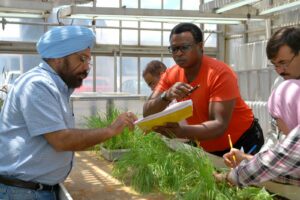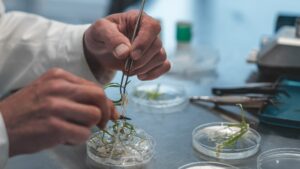It’s been around for a long time, but why has pre-breeding become a new buzzword?
The world’s climate is changing, and that means the advances made by the Green Revolution in terms of food security won’t carry us far into the coming age, experts say. What’s needed are new varieties of plants bred to handle the ravages of unpredictable climate change.
Enter the field of pre-breeding. While it’s been around for a long time, there’s a renewed interest in work going on around the world to create new germplasm with potential worth to develop “climate-smart varieties.” In the coming years, you’ll be seeing a lot of this word echoing in almost all crop breeding programs, so it’s a good time to brush up on your pre-breeding knowledge.
What is Pre-Breeding?

The term encompasses all activities planned to identify desirable characteristics or genes from non-adapted (exotic or semi-exotic) materials that cannot be used directly in breeding populations effectively and efficiently, and to transfer these traits to an intermediate set of materials that breeders can further use in producing new varieties for farmers.
“These pre-breeding activities bridge the gap between the germplasm banks and the breeding programs that need germplasm collections, because the new traits from these collections can be bred into new varieties,” says Sukhwinder Singh, wheat lead with Seeds of Discovery at the International Maize and Wheat Improvement Center (CIMMYT).
Why the Renewed Interest?
In light of climate change, a narrow genetic base of agricultural crops is a threat to food security. Genetic uniformity of modern varieties increases genetic vulnerability for pests and disease, and they also replace the highly diverse local cultivars and landraces in traditional agro-ecosystems, pre-breeders say.
“Pre-breeding is the kind of approach we need to speed up breeding varieties adapted to a changing climate,” says Matthew Reynolds, CIMMYT head of wheat physiology. “This work is urgent. We are bringing people together from around the planet who are interested in heat and drought stress so we have the best ideas collated to improve pre-breeding efforts.”

Pre-breeding, in a nutshell, can be used to fight climate change by helping create new varieties of plants that are drought tolerant, heat tolerant and salt tolerant.
Pre-breeding in Action
For the first time, a team of more than 40 scientists has genetically characterized values of exotics in hexaploid wheat. CIMMYT scientists and partners in Mexico, India, Pakistan, Denmark and the United Kingdom used next-generation sequencing and multi-environment phenotyping to study the contribution of exotic genomes to pre-breeding lines. Results of the study, recently published in Nature Scientific Reports, show that some DNA from exotic germplasm improved the biotic and abiotic stress tolerances of lines derived from crosses of exotics with CIMMYT’s best elite lines.
In Canada, researchers including Gavin Humphreys, a research scientist at Agriculture and Agri-Food Canada, are pre-breeding to make wheat more resistant to fusarium head blight (FHB). A breeding line has been developed from a cross between Crocus hexaploid wheat and a hybrid line that contains chromosomes of Thinopyrum elongatum, a type of wheatgrass. The new breeding line, which has segments of Thynopirum DNA, is resistant to FHB, leaf rust and stem rust.













